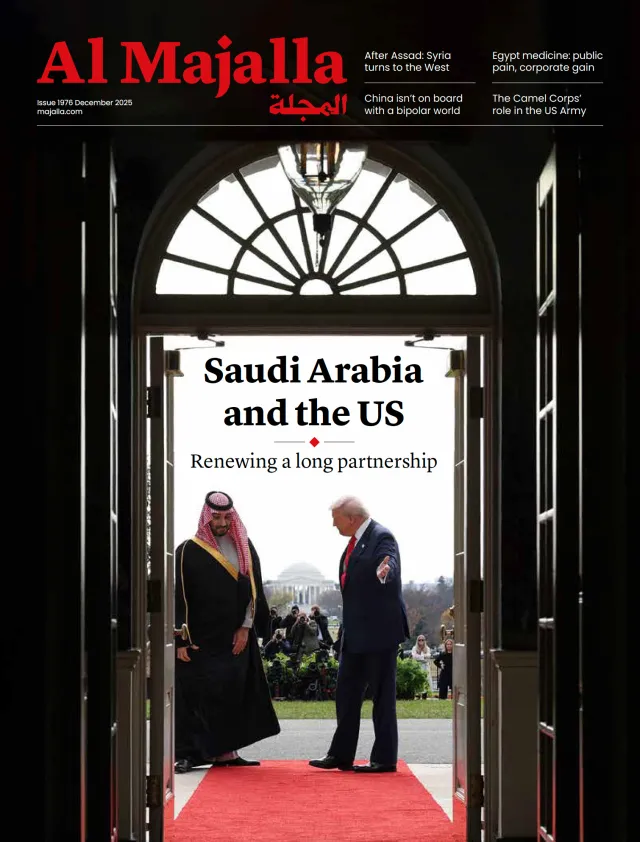Apple co-founder Steve Jobs once famously said, “Start small, think big.” To some extent, that sentiment applied to the agenda of the US-Russian talks in Riyadh in March, where the parties unexpectedly revived the Arctic as a region for possible economic cooperation. Given the war in Ukraine and other fundamental disagreements, such a scenario, beyond symbolic gestures, seems unlikely. Nevertheless, Moscow and Washington seem intent on sustaining the trend of normalising relations—and for this reason, one can begin to dream.
The Arctic and the North Pole did not arise by chance. It is clear that American and Russian negotiators initially sought to separate overall bilateral ties from the war in Ukraine. It is therefore no coincidence that Russian President Vladimir Putin included Kirill Dmitriev, CEO of the Russian Direct Investment Fund, in the negotiating team. His task was to energetically and clearly explain the benefits of restoring investment and economic cooperation to a business-minded Donald Trump.
Moscow’s emphasis on potential collaboration in the Arctic seems logical, given the US president’s assertive desire to gain control of Greenland and limit China’s activities in the region. There have, after all, been positive examples of cooperation in the past, including joint ventures between Russia’s Rosneft and US companies ExxonMobil and General Electric.
In 2014, collaboration between Rosneft and ExxonMobil led to the discovery of a field in the Kara Sea with reserves of 130 million tonnes of oil and 422 billion cubic metres of gas. However, the exploration was affected by Western sanctions imposed on Russia in 2014, leading to ExxonMobil’s withdrawal from the project.

The Kremlin chose to publicly develop this theme during Putin’s visit to Murmansk, which was timed to coincide with US Vice President JD Vance’s visit to Greenland. During his participation in the ‘Arctic: Territory of Dialogue’ forum, the Russian president called for cooperation with the US in the Arctic and effectively voiced support for Washington’s claims to Greenland. He also pointed out that the question of Greenland had nothing to do with Russia, while expressing concern that NATO countries consider the North Pole a possible conflict zone. In particular, the alliance’s newest recruits, Finland and Sweden, have been involved in military exercises in the territory.
At the same forum, Dmitriev announced Russia’s plan to create a special investment fund for Arctic development by the end of the year. This fund, he claimed, would attract capital from partners in the GCC and “a number of Western countries”. He also noted the US has shown interest in investing in Russia’s Arctic region, including LNG projects.
On the one hand, the Kremlin’s exploitation of the Arctic can be viewed within the framework of Russia’s diplomatic approach to the current US administration. Moscow is ready to throw decorative minor concessions to Trump in order to prevent fundamental disagreements over Ukraine from interfering with the restoration of bilateral relations.
Good cop/bad cop
Moreover, in his communication with the US, Putin uses the traditional good cop/bad cop tactic, with the role of the good guy played by Dmitriev. Experienced diplomats and security officials, meanwhile, are left to play the hardliners. At the same time, the Russian president realises that both groups are bound to compete with each other, leading to more effective negotiations and honest reporting.

The Kremlin is also well aware that Trump’s Arctic ambitions – such as acquiring Greenland, increasing activity within the framework of the Icebreaker Cooperation Effort (ICE), and purchasing icebreakers from Finland—are directly related to the containment of Russia’s Arctic expansion and the build-up of US military infrastructure in the region.
At the same time, Washington’s Arctic policy is not only related to Trump’s business acumen – it follows on from previous administrations. During Joe Biden’s presidency, for example, the US made a qualitative leap in Arctic policy. It mentioned the Arctic in its National Security Strategy, adopted a new Arctic strategy, established the post of Arctic ambassador, concluded an alliance with Canada and Finland, and initiated large-scale modernisation of the joint North American Aerospace Defence Command with Ottawa.
So, while Moscow and Washington continue to play geopolitical chess—anticipating and concealing their next moves—dialogue helps reduce mutual misunderstanding.
Prior to the war in Ukraine, Russia invested heavily in rebuilding its Arctic military presence, which is now much larger than all other countries in the Arctic combined. However, almost all of its facilities are concentrated in the western Arctic, specifically the Kola Peninsula, with the exception of a small cluster on the Novosibirsk Islands.
Arctic development
Despite the economic pressure on Ukraine and the weight of sanctions, Moscow is pressing ahead with Arctic development. Putin has already announced an increase in military deployment and is pushing ahead with the development of transportation and industrial infrastructure. These efforts are largely driven by the need to maintain the region’s main transportation artery – the Northern Sea Route (NSR). Between 2014 and 2024, transportation along the NSR increased from four to 37.9 mn tonnes, with LNG accounting for more than 50% of the cargo traffic. This growth has been underpinned by a strengthened icebreaker fleet.

Russia currently operates about 40 icebreakers, including 34 diesel-electric ships (11 of which were built and commissioned in the 2000s and 2010s) and seven nuclear-powered vessels. There is also an eighth nuclear-powered container ship, the Sevmorput, launched in 1988. Although capable of breaking ice a metre thick, it has limited power and is not usually included in the fleet roll call.
According to Prime Minister Mikhail Mishustin, five more nuclear-powered icebreakers will be added to the fleet in the coming years. Among them is the Rossiya, which will be capable of guiding ships through ice up to four metres thick. In other words, Russia’s primary problem in the Arctic is its merchant fleet, which has been adversely affected by sanctions.
Meanwhile, nine of the 12 US Coast Guard icebreakers are designed to work on the Great Lakes and are unsuitable for the Arctic, even in a support role. Only three non-nuclear icebreakers remain. Two of them—Polar Star (WAGB-10) and Polar Sea (WAGB-11)—were built in the 1970s and are approaching the end of their operational lives. The Polar Sea has been inactive since 2010, while the Polar Star has spent a considerable amount of time in a California dock awaiting maintenance. That leaves the Healy (WAGB-20) as the sole active vessel, capable of handline ice 1.2 metres thick.
Meanwhile, the US Polar Security Cutter programme has faced consistent delays and setbacks. Although acquiring ships from Canada and Finland could be an option, Canada’s fleet mostly consists of medium and small vessels, including hovercraft for estuarine operations. Finland’s 11 icebreakers are similarly small.

Conflict capacity
Media commentators tend to associate increased Arctic competition with the melting of sea ice, which could unlock resources and provoke military conflict. However, so far, global warming has not led to any serious changes in territorial configuration. While the record minimum Arctic sea ice extent was observed in September 2012, the Arctic ice area has continued to decrease since then, according to NASA and other scientific data.
Even if the ice continues to melt, large-scale economic activity remains unlikely. Shipping in ice conditions still requires military escort, increasing the cost of transportation significantly and eliminating the economic benefit of shorter routes. Meanwhile, no precedent for the extraction of oil and gas from beneath even temporary ice exists. Even if we assume a serious melting of the ice, the cost and difficulty of extracting hydrocarbons remain prohibitive, especially at current oil prices.
Nor will melting ice shift the balance of power in the region. Russia already has more ships in the Arctic zone than all other countries combined. For the advantage to shift in NATO’s favour, the alliance would have to establish more bases. The US has a Coast Guard base in Alaska and a space base in Pituffik, which primarily allows for military control of Greenland, but neither supports a military base. The deployed military assets of Norway and Canada can hardly be described as powerful, while the potential for naval battles in the Arctic remains hypothetical.
From Moscow’s perspective, the only real threat comes from the theoretical deployment of US air defence systems in northern Canada and Greenland, which could shoot down Russian missiles mid-flight. However, deploying a large number of ground-based Mk41s in the Arctic is an extremely long, time-consuming, and costly undertaking.














